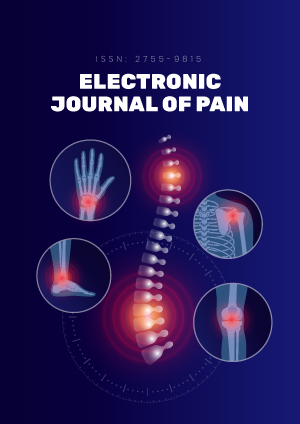Aims and Scope
Electronic Journal of Pain is peer-reviewed and published in 2 issues per year. The journal is an open access journal. The journal strictly adheres to the principles of the peer review process.
Electronic Journal of Pain publishes articles that cover mechanisms, treatments, socioeconomics, diagnostics, preventative measures and pain management in a range of medical specialties. The scope of the journal, as is the field of pain research, is dauntingly expansive, but reflects a threefold focus for the manuscripts that we invite for submission:
1) Elucidation of pain biology: This reflects an interest which is inclusive of the gamut of current research technologies from membrane biophysics and electrophysiology. This underlies system excitability to an understanding of peripheral components (inflammation, innate/adaptive immunity, the microbiome), as well as spinal and supraspinal organization, the role of which is to mediate pain behavior and experience.
2) Characterization of pain interventions: The efficacy and mechanisms of action of pharmacological and non-pharmacological interventions which alter pain processing and perception are of principal interest. The focus is agnostic as to therapeutic modality: drug targets, novel delivery routes and mechanisms, stimulation, and psychological interventions are all part of this focus.
3) Fundamental aspects of pain: Analgesia, regional analgesia, acute and chronic pain; Applied aspects of pain; Clinical aspects of pain; Pharmacological aspects of pain; Clinical anatomical approach to pain; Interdisciplinary approach to pain; Treatment and rehabilitation of patients suffering from pain; Psychological aspect of pain; Separate clinical cases and their clinical examination.
The aim is to advance the scholarship and the scientific knowledge base of general practice doctors, anaesthesiologist, neurologist, oncologist, surgeon specialist, psychologist and other specialists who relieve pain and provide new information for treatment of different types of pain. Articles can take a variety of forms of scholarly communication. We emphasize the importance of communication which has not been stressed adequately in the past such as interviews/conversations with eminent scholars of the field and hence encourage authors to get engaged in such activities and prepare manuscripts of this form. We welcome ideas and suggestions for special issues dedicated to a special theme or region/country.
Below is the non-exhaustive list of topics that can be published in the journal:
- Editorials
- Original articles
- Reviews and critiques of books and articles
- Case reports
- Letter to the editors
- interviews/conversations with eminent scholars
